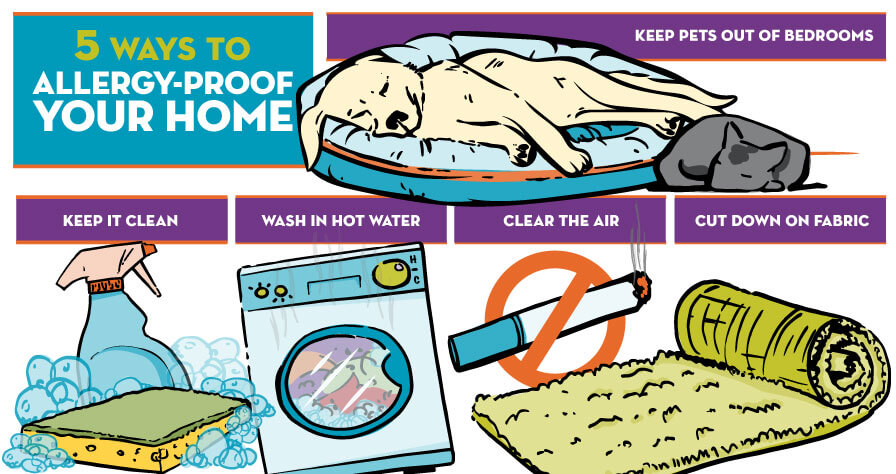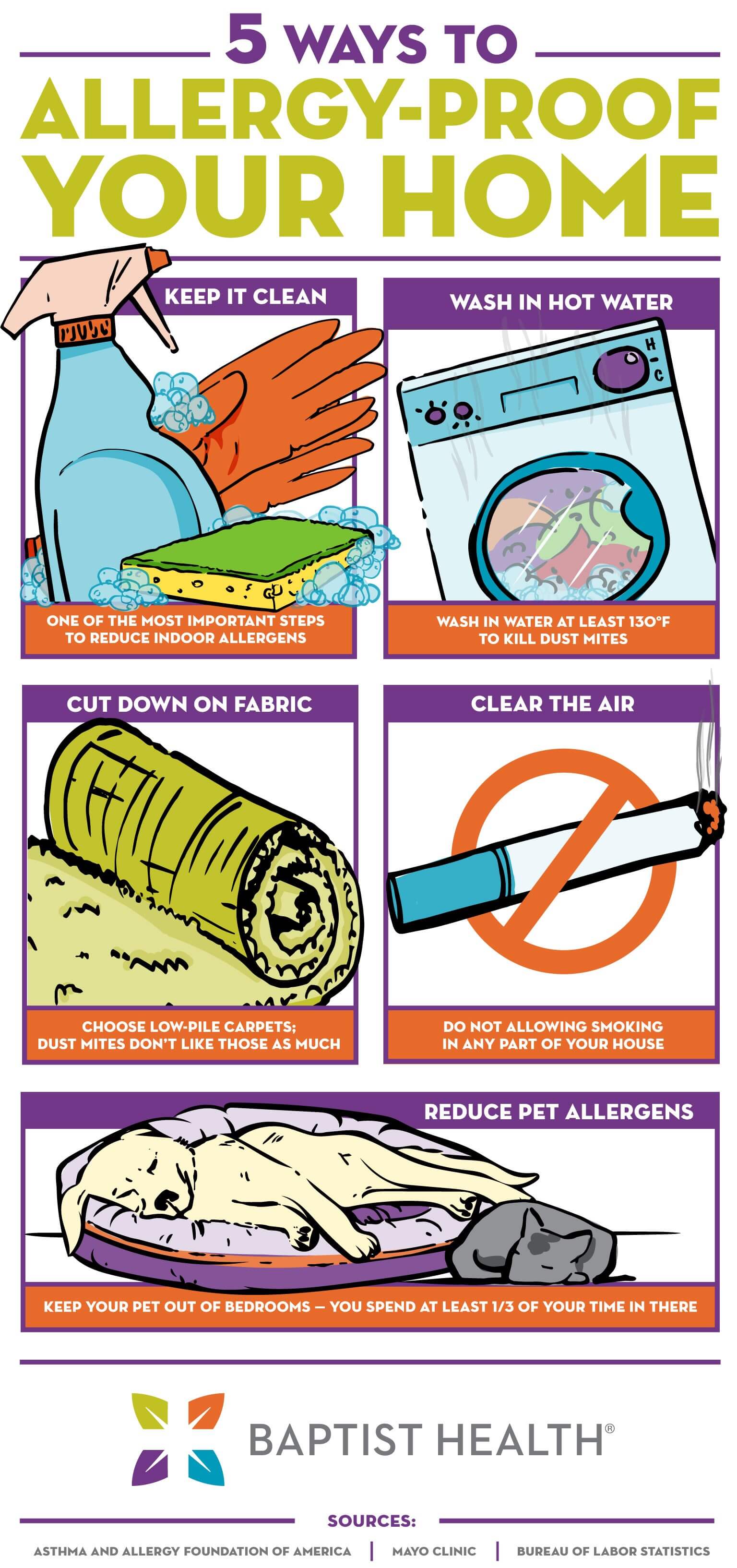How to Allergy Proof My Home

According to the Asthma and Allergy Foundation of America, roughly 50 million Americans — and growing — suffer from allergies, both indoor and outdoor. If you’re one of those 50 million, you know how the quality of life can diminish without intervention. While you can’t control allergens outside your house, you can take steps to reduce indoor allergies.
How to Reduce Indoor Allergies in the Home
Keeping your home spic and span is one of the most important steps you can take to reduce indoor allergens. Be on the lookout for mold, and eliminate it at the first sign. Thoroughly clean kitchen counters and don’t let dishes pile up in the sink; left-out food can attract cockroaches, which cause year-round allergies.
Cut Down On Fabric
Indoor carpets are ideal homes for dust mites. Remove carpets in your home, if you can. If that’s not an option, choose low-pile carpets; dust mites don’t like those as much. A better option is to use throw rugs and wash them frequently. And, when vacuuming, be sure to wear a dust mask.
Dust mites also make their homes in curtains, blinds, upholstered furniture and down-filled pillows and comforters.
Reduce Pet Allergens
Even if they make us sneeze, we still love our pets. When rehoming your pet is not an option, you’ll want to find ways to minimize pet allergens. First and foremost, keep your pet out of the bedroom — you spend at least one-third of your time there. Cover vents and registers in the bedroom with cheesecloth to keep allergens from circulating through forced air heating and cooling systems.
You’ll also want to keep surfaces throughout the home uncluttered to make cleaning easier, and it’s advisable to wear a mask while dusting. To further reduce pet allergens in the house, ask someone without a pet allergy to brush your pet outside. It’ll remove allergy-causing dander.
Clean Air Helps Minimize Indoor Allergies
It should go without saying that, if you suffer from allergies, you should not allowing smoking in any part of your house. To keep your air as clean as possible, you can use a high-efficiency particulate air (HEPA) or small-particle filter and a dehumidifier to keep humidity at 50% or lower. An exhaust fan in the bathroom can also help control moisture and humidity levels.
And, it’s suggested that you maintain a temperature of 68°F – 72°F to prevent mold from growing.
Wash Fabrics in Hot Water to Kill Dust Mites
Wash any and all fabrics you can in hot water — especially bed linens, curtains, mattress covers, towels and throw rugs. You should wash these once a week in water that’s at least 130°F to kill dust mites.
Understand Your Allergy Triggers
Allergies negatively affect the quality of life and make our favorite activities unenjoyable. But, if you follow the steps above, you can improve or remedy some symptoms. If your allergies are severe and persistent, you may want to talk to your doctor about an allergy test. Once you know exactly what your triggers are, it’ll be easier to avoid allergens in the future.

Learn more about Allergy & Asthma care and services at Baptist Health.
Allergy-related topics:



